Hoops Rumors is checking in on the 2024 offseason for all 30 NBA teams, recapping the summer’s free agent signings, trades, draft picks, departures, and more. We’ll take a look at each team’s offseason moves and consider what might still be coming before the regular season begins. Today, we’re focusing on the Golden State Warriors.
Free agent signings
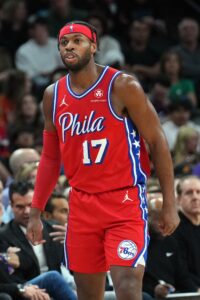 Buddy Hield: Four years, $37,756,096. Third year partially guaranteed ($3MM). Fourth-year player option (partially guaranteed for $3,136,364 if exercised). Signed using Bird rights and acquired via sign-and-trade from Sixers.
Buddy Hield: Four years, $37,756,096. Third year partially guaranteed ($3MM). Fourth-year player option (partially guaranteed for $3,136,364 if exercised). Signed using Bird rights and acquired via sign-and-trade from Sixers.- Kyle Anderson: Three years, $27,658,536. Third year non-guaranteed. Signed using Bird rights and acquired via sign-and-trade from Timberwolves.
- De’Anthony Melton: One year, $12,822,000. Signed using non-taxpayer mid-level exception.
- Jackson Rowe: One year, minimum salary. Non-guaranteed (Exhibit 10). Signed using minimum salary exception.
Trades
- Acquired Lindy Waters from the Thunder in exchange for the draft rights to Quinten Post (No. 52 pick).
- Reacquired the draft rights to Quinten Post (No. 52 pick) from the Trail Blazers in exchange for cash.
- Acquired Kyle Anderson (sign-and-trade) and Buddy Hield (sign-and-trade) in a six-team trade in exchange for Klay Thompson (sign-and-trade; to Mavericks), swap rights for the Warriors’ 2031 second-round pick (to Timberwolves), and cash (to Timberwolves)
Draft picks
Two-way signings
Departed/unsigned free agents
Other moves
Salary cap situation
- Operating over the cap ($140.6MM), over the luxury tax line ($170.8MM), and below the first tax apron ($178.1MM).
- Carrying approximately $176.6MM in salary.
- Hard-capped at $178,132,000.
- Bi-annual exception available.
- One traded player exception available (worth $2,019,706).
The offseason so far
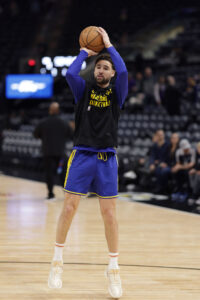 It was the end of an era this summer in the Bay Area, as four-time champion Klay Thompson, decided to move on to a new team after spending his first 13 NBA seasons with the Warriors.
It was the end of an era this summer in the Bay Area, as four-time champion Klay Thompson, decided to move on to a new team after spending his first 13 NBA seasons with the Warriors.
Seeing Thompson in a Mavericks uniform next season will be an adjustment — if there was one group of active core players who seemed destined to spend their entire careers with a single franchise, it was Thompson, Stephen Curry, and Draymond Green with the Warriors.
Still, it’s hard to say the move was particularly surprising, given how disgruntled Thompson seemed to be during his final season in Golden State as his role diminished, his production declined, and the Warriors’ extension offer(s) came in below what he believed his history with the organization warranted.
Thompson is still an effective offensive weapon (he averaged 17.9 PPG with a .387 3PT% last season), but his defense has fallen off since he tore his ACL and Achilles, and moving on from him and Chris Paul (whose $30MM non-guaranteed salary was waived) makes the Warriors’ roster younger, more flexible, and more affordable heading into the 2024/25 season.
After operating above the luxury tax line for years, the Warriors made a concerted effort to cut costs — ownership would likely still be willing to spend big bucks for a championship contender, but the club didn’t make it out of the first round of the play-in tournament this spring. It didn’t make sense to continue carrying such a significant payroll.
The move below the first tax apron allowed the Dubs to make the kinds of moves that had been off-limits for years, including using their full mid-level exception (on versatile guard De’Anthony Melton) and acquiring players via sign-and-trade (sharpshooter Buddy Hield and savvy veteran Kyle Anderson).
The newcomers won’t instantly return Golden State to title contention, but there’s optimism that their mix of skill sets and the ongoing development of young players like Jonathan Kuminga, Moses Moody, Brandin Podziemski, and Trayce Jackson-Davis can make the Warriors a deeper, more dangerous team than they were in 2023/24.
Up next
With 14 players on standard contracts and three on two-way deals, the Warriors’ roster looks just about regular-season-ready. Adding a 15th man is unlikely due to the team’s proximity to its hard cap, and while Gui Santos and Lindy Waters aren’t necessarily locked in for the regular season due to their non-guaranteed salaries, there has been no indication Golden State will look to replace either player.
Still, there are issues to address before the season begins, starting with potential contract extensions. Kuminga and Moody are eligible for rookie scale extensions, while Curry could sign a one-year veteran extension worth approximately $62.6MM for 2026/27.
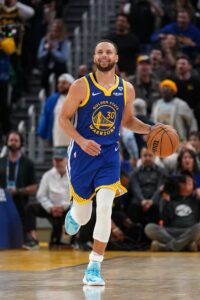 I wouldn’t necessarily expect Moody to get a new deal this summer or fall. His playing time has been inconsistent in his first three seasons, so the Warriors will be reluctant to pay him big money based on his career achievements so far, while Moody will be reluctant to lock in a long-term deal before he gets a chance to show what he can do with a more regular role.
I wouldn’t necessarily expect Moody to get a new deal this summer or fall. His playing time has been inconsistent in his first three seasons, so the Warriors will be reluctant to pay him big money based on his career achievements so far, while Moody will be reluctant to lock in a long-term deal before he gets a chance to show what he can do with a more regular role.
Curry, on the other hand, seems more likely to get something done. The Over-38 rule prevents the Warriors from tacking on more than one year to the two left on his current deal, but I have to think they’d be willing to give him that one year if he wants it. Curry showed in the gold medal game at the Paris Olympics that we shouldn’t count on his performance falling off anytime soon.
Kuminga’s case is a trickier one. Based on his breakout performance during the second half of the 2023/24 season (he averaged 20.0 PPG and 5.4 RPG on .547/.377/.778 shooting during a 34-game stretch from January 12 to March 26 before injuring his knee), he’d be justified in seeking a massive payday.
I don’t expect the Warriors to give him the maximum-salary deal that his fellow 2021 draftees Scottie Barnes, Cade Cunningham, Evan Mobley, and Franz Wagner received. The question is whether there’s an amount below the max that makes sense for both sides.
Given his limited track record, you may balk at the idea of a deal in the range of $150-175MM for Kuminga, but if he follows up last year’s breakout by taking another step forward, he could be worth even more than that in free agency next summer. As a point of comparison, Immanuel Quickley got $162.5MM in guaranteed money from Toronto last month as a restricted free agent. This will be a tricky negotiation, so it wouldn’t be a shock if Golden State takes its chances and postpones it until 2025.
In addition to sorting through possible extensions, the Warriors will have to resolve Quinten Post‘s situation. The No. 52 overall pick is one of the only unsigned players from this year’s draft class — a two-way deal would make sense, given his draft slot, but Golden State would have to waive someone (possibly Pat Spencer?) to create a two-way opening for Post.
The Warriors’ pursuit of Lauri Markkanen showed that the front office isn’t opposed to shaking up its roster before training camp, but with the Jazz forward no longer trade-eligible, I don’t see any trade candidates out there right now that make a ton of sense for Golden State. While general manager Mike Dunleavy Jr. will probably keep an eye out for possible deals, I’d be a little surprised if he does anything significant by October.

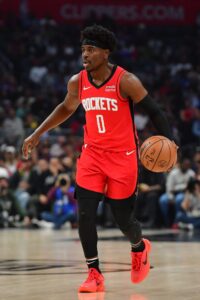
 The team also made a minor move on the trade market by acquiring
The team also made a minor move on the trade market by acquiring 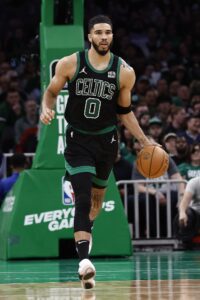 [RELATED:
[RELATED: 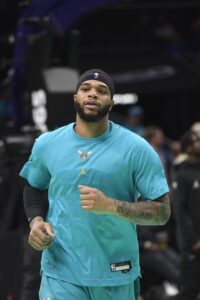
 The Hornets’ 2024 lottery pick doesn’t come without risk either, albeit for entirely different reasons —
The Hornets’ 2024 lottery pick doesn’t come without risk either, albeit for entirely different reasons — 
 It was the end of an era this summer in the Bay Area, as four-time champion
It was the end of an era this summer in the Bay Area, as four-time champion  I wouldn’t necessarily expect Moody to get a new deal this summer or fall. His playing time has been inconsistent in his first three seasons, so the Warriors will be reluctant to pay him big money based on his career achievements so far, while Moody will be reluctant to lock in a long-term deal before he gets a chance to show what he can do with a more regular role.
I wouldn’t necessarily expect Moody to get a new deal this summer or fall. His playing time has been inconsistent in his first three seasons, so the Warriors will be reluctant to pay him big money based on his career achievements so far, while Moody will be reluctant to lock in a long-term deal before he gets a chance to show what he can do with a more regular role.